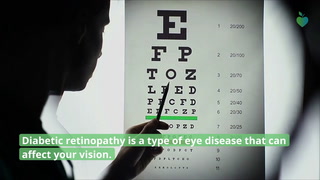(1)
What Is Diabetic Retinopathy, and Could You Be at Risk?
Floaters sometimes clear on their own.
During this stage, the appearance of the retina may change as a result of these symptoms.

But these changes would only be visible to your eye doctor during acomprehensive eye exam.
Mild and moderate NPDR are sometimes grouped together as early DR. Youll need to undergo a comprehensive eye exam to receive a diagnosis of diabetic retinopathy.
Your doctor can use these photos of your retinas to identify damaged blood vessels.

Your doctor may also use optical coherence tomography to obtain cross-sectional images of your retinas.
This includes aproper diet, exercise, and possiblymedication, including injectable insulin.
Medical management alone can cause some regression, but only in the earliest stages, Dr. Singh says.

Managing blood sugar appropriately can help slow or stop the progression of this eye disease.
If you have early, mild, or even moderate NPDR, you may not need treatment immediately.
Still, your eye doctor will probably want to monitor your condition closely with regular eye exams.

(3)
A diagnosis of severe NPDR or PDR will most likely require immediate surgery.
Because diabetes is a lifelong condition, additional retinal damage and vision loss are possible even after surgery.
You should continue to get routine eye exams to monitor your condition.

Also, ask your endocrinologist about ways to improve your diabetes management plan.
Effective blood sugar control can usually slow the progression of mild or moderate diabetic retinopathy.
Most people who receive these injections will need to get them for at least three months.

(1)
Focal Laser SurgeryThis surgery targets macular edema, which is fluid buildup in the retina.
Also calledphotocoagulation, this is usually done in your doctors office as an outpatient procedure during a single session.
You may also experience loss of peripheral vision or night vision after the procedure.

Vitrectomy requires the use of general anesthesia.
Good blood sugar control is crucial to preventing long-term complications such as diabetic retinopathy, he says.
Minor vitreous hemorrhage can cause you to see floaters.

With severe vitreous hemorrhage, blood can fill the vitreous cavity and completely block your vision.
Retinal detachment can cause you to see floaters or flashes of light.
If left untreated, it may lead to severe, permanent vision loss.

If left untreated, glaucoma may cause permanent blindness.
(3)
Research and Statistics: How Many People Have Diabetic Retinopathy?
About one-third of Americans living with diabetes have some form of diabetic retinopathy, according to the CDC.

Diabetic retinopathy is the most common cause of vision loss and blindness among working-age Americans, the CDC says.
you’re able to also find alist of local in-person support groups.
The data is then crunched through an algorithm to tell the patient their risk.

Additional reporting byBrian P. Dunleavy.
As a former staff member at Everyday Health, she covered a wide range of chronic conditions and diseases.
She enjoys yoga and is an aspiring runner.




